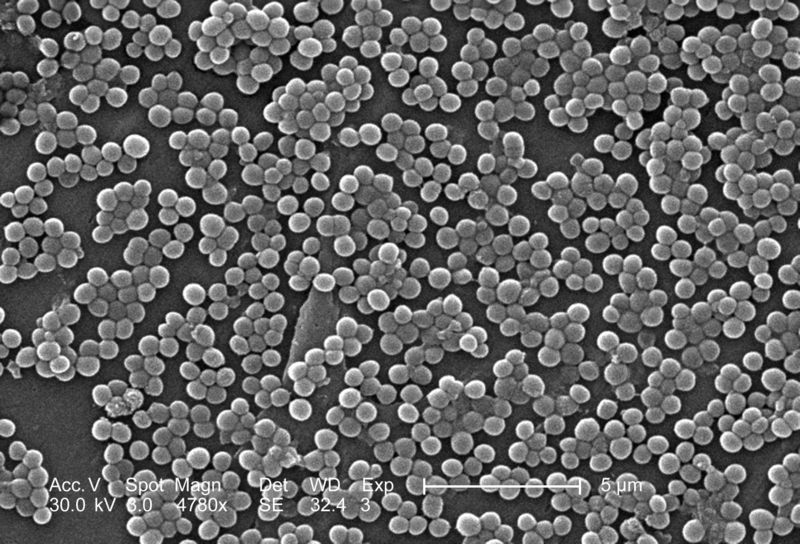New way to KO MRSA
The relentless onward march of microbial resistance means that the arsenal of antibiotics that are effective against certain infectious illnesses is dwindling. But a paper in PLoS Pathogens this week is welcome news because New York-based scientist Paul Dunman and his colleagues have found a new way to attack MRSA and other microbial nasties.
 The team have targeted the system used by the bugs to recycle their messenger RNA, a chemical relative of DNA that is an essential ingredient used by cells to decode the recipes written into their genomes. But, because bacteria grow so rapidly, they need to degrade and recycle these RNA messages quickly, otherwise the cell becomes overwhelmed with spurious signals that harm metabolism and they also risk running out of RNA building blocks with which to read fresh recipes required to keep the cell alive.
The team have targeted the system used by the bugs to recycle their messenger RNA, a chemical relative of DNA that is an essential ingredient used by cells to decode the recipes written into their genomes. But, because bacteria grow so rapidly, they need to degrade and recycle these RNA messages quickly, otherwise the cell becomes overwhelmed with spurious signals that harm metabolism and they also risk running out of RNA building blocks with which to read fresh recipes required to keep the cell alive.
It's precisely this pathway that the New York team have found a way to hit. By comparing genes that were active when bacteria are multiplying quickly with slower growing bacteria, which don't need to degrade their RNAs so rapidly, the team identified one protein, called RnpA, whose job it is to chew up and recycle RNA.
Next, they screened 29,000 different chemicals to identify compounds capable of potently inhibiting the protein, which the team found is essential for bacterial cell growth.
One, a molecule they've called RNPA1000, brings dish-grown MRSA to a standstill.
"We believe this basically makes the bacterial cell go haywire," says Dunman. "The cell is producing proteins it no longer needs, and it can't produce proteins that it does need."
RNPA1000 was also highly efficacious against other problem bacteria including Streptococcus pneumoniae, which causes pneumonia and meningitis, Streptococcus pyogenes, which causes skin and throat infections, and vancomycin-resistant Enterococcus faecium (VRE), another rising star of the resistant superbug world.
The team were also able to demonstrate that the compound was active in-vivo by testing it on mice, demonstrating that 50% of animals given a lethal dose of bacteria survived compared with 100% mortality in the untreated control group.
Unfortunately, the agent is mildly toxic in human cells, meaning that it is unlikely to be useful clinically in itself but it has, nonetheless, provided the researchers with the chemical insight to enable them to now begin to develop a new range of agents that target the same pathways but with even greater potency and reduced toxicity.
"This is a great starting point," says Dunman. "We've gotten a lead from the drug screen, and now we're building a better molecule."
- Previous Cardiac rehab by smartphone
- Next Bendy superconducting cables





Comments
Add a comment